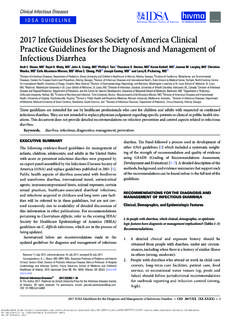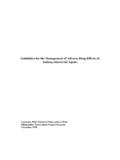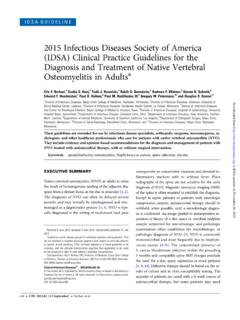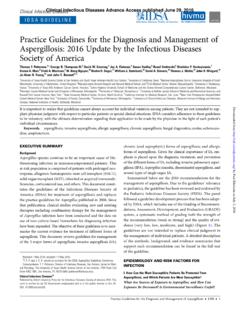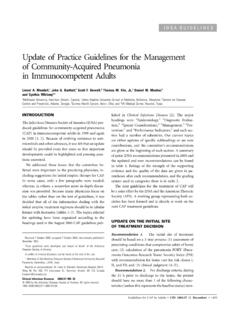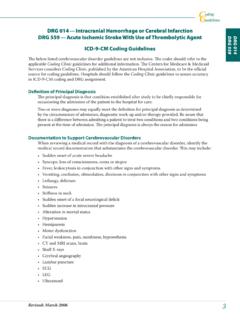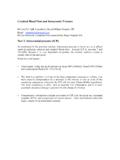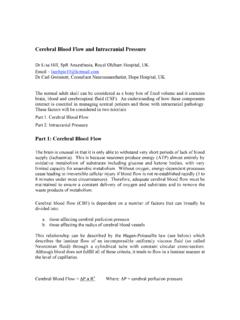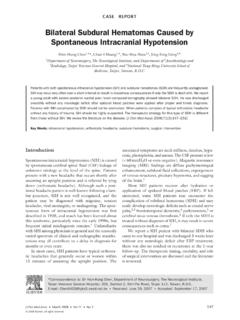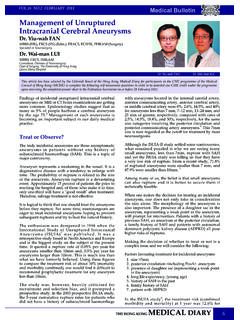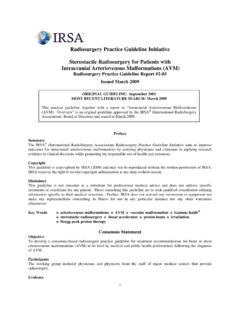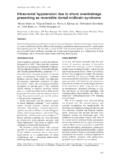Transcription of Intracranial Hypertension: 20%Mannitol Last …
1 Intracranial Hypertension: 20%Mannitol Last reviewed: 5/30/06 NEUROICU Guideline: Osmotherapy for Treatment of Intracranial Hypertension 20% mannitol Goal: To treat severe Intracranial hypertension (ICP> 20mmHg) in severely brain-injured patients Patient Eligibility: 1. Patient must be in the NeuroICU and administration of therapy must be per protocol. 2. Patient must have severe Intracranial hypertension (ICP>20mmHg) Contraindications: 1. ICP < 20 mmHg 2. Significant intravascular volume depletion exists: a. Based on a clinical assessment by the NeuroCritical Care Service which synthesizes exam findings, laboratory results, and other pertinent clinical data b. For example: CVP<6; net negative fluid balance; elevated BUN/creatinine ratio 2. Serum Na+ >160mmol/L 3. Serum osmolar gap>20 4. Relative Contraindication: Renal insufficiency/ failure Monitoring: All patient receiving HTS for the treatment of Intracranial hypertension must have the following parameters monitored and documented: 1.
2 Central venous pressure via a central venous catheter OR pulmonary artery occlusion pressure via a pulmonary artery catheter (except in cases of emergent administration) 2. Intracranial pressure monitoring 3. All other monitoring and documentation per NeuroICU protocol Protocol: 1. MD will order: XX gm mannitol q 6hrs prn ICP > 20mmHg. Hold for osm>320mmol AND osm gap>20. Hold for serum Na+ >160mmol/L. a. mannitol dose should be b. Maximum dose: 150 gms. 2. Administer first dose of mannitol as ordered. Rate of administration should not exceed (administer over 15 minutes) 3. If mannitol fails to lower ICP below 20mmHg within 20 minutes of administration or if severe Intracranial hypertension (ICP>20mmHg) recurs within 6 hours of administration- consider use of 5%NaCl. (*See NeuroICU Osmotherapy Guidelines for Treatment of Intracranial Hypertension: Hypertonic Saline- 5%NaCl/Na acetate) 4.
3 If ICP responds to mannitol in a sustained fashion, then five hours post administration, check serum Na+, BUN, glucose, and serum osm- calculate the osm gap. 5. If ICP again exceeds 20mmHg, then: a. If serum osm<320mmol, then administer next dose of mannitol b. If serum osm>320mmol: i. Calculate osm gap ii. OSM GAP = Measured OSM Calculated OSM 1). Measured OSM= OSM value obtained from lab 2). Calculated OSM= 2(Na+) + BUN/3 + glucose/18 iii. If osm gap<20mmol- administer next dose of mannitol iv. If osm gap>20mmol- hold mannitol and notify MD. Consider use of 5%HTS. 6. Replace urinary losses on a cc per cc basis for the first 2 hrs following each administration. 7. If hypotension or a drop in CPP below 70mmHg occurs, notify MD and consider HTS 8. For each occurrence of severe Intracranial hypertension, review and repeat protocol.
